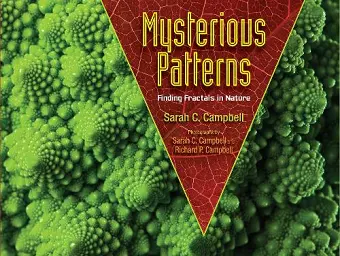Mysterious Patterns
Finding Fractals in Nature
Sarah C Campbell author Richard P Campbell illustrator
Format:Paperback
Publisher:Astra Publishing House
Published:10th Oct '23
Should be back in stock very soon

Nature's repeating patterns, better known as fractals can be quantified mathematically, while also being beautiful and universal and explain much about how things grow.
Here is an elegant introduction to fractals through natural examples that can be seen in parks, rivers, and our very own back garden.
This book includes the following insights on how to:
- Demystify maths and how it applies to everyday life
- Inspire budding mathematicians
- Motivate visual learners through inviting text and page designs
- Understand the role mathematics plays in nature and the world around us
Young readers will be fascinated to learn that broccoli florets are fractals—just like mountain ranges, river systems, and trees—and will share in the wonder of math as it is reflected in the world around us.
Mysterious Patterns is an exciting interdisciplinary introduction to repeating patterns, perfect for any elementary school classroom or library.
★ "This fascinating exploration should awaken readers' powers of observation and appreciation for the intricacies of nature." —Publishers Weekly, starred review
★ "Using clear text and outstanding color photographs, Campbell explores the concept of these unusual shapes. . . An afterword reveals more of Mandlebrot's background and work, which will be an inspiration to budding scientists/mathematicians." —School Library Journal, starred review
"This beautifully designed volume is a useful resource and, apparently, the only children's book devoted to fractals." —Booklist
"Through examples of what fractals are and what they aren't, this photo essay introduces a complex mathematical idea in a simple, inviting way. Using a straightforward text and eye-catching photographs, the Campbells start with the familiar: spheres, cones, cylinders--shapes readers can find and readily name in their environments. But then they move on to the more elaborate forms . . . For visual learners, this is a particularly accessible demonstration of an intriguing concept." —Kirkus Reviews
ISBN: 9781662620416
Dimensions: unknown
Weight: unknown
32 pages